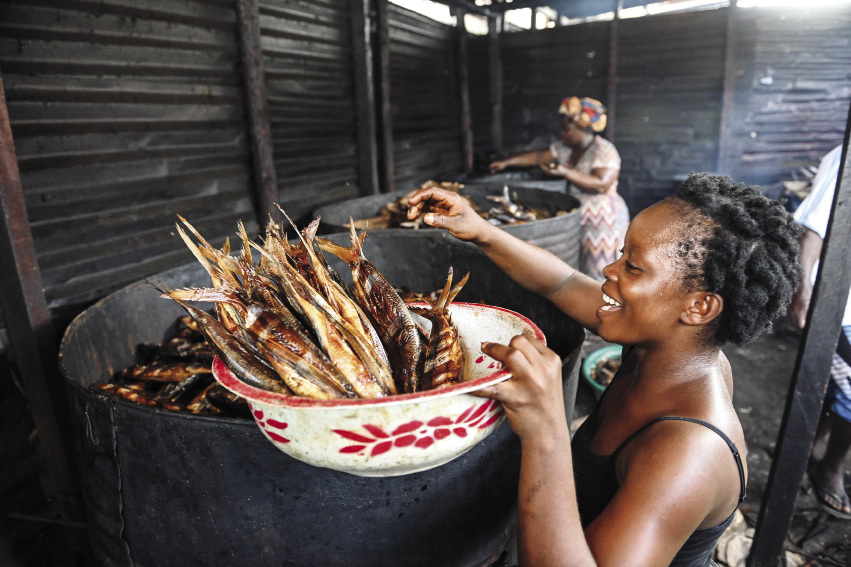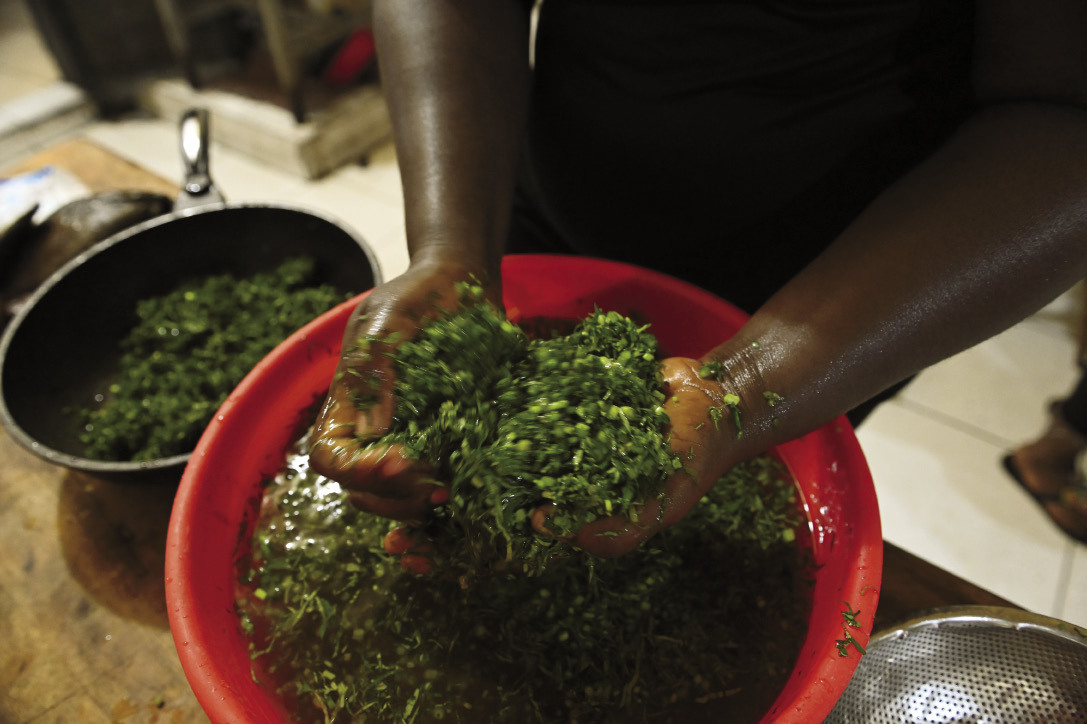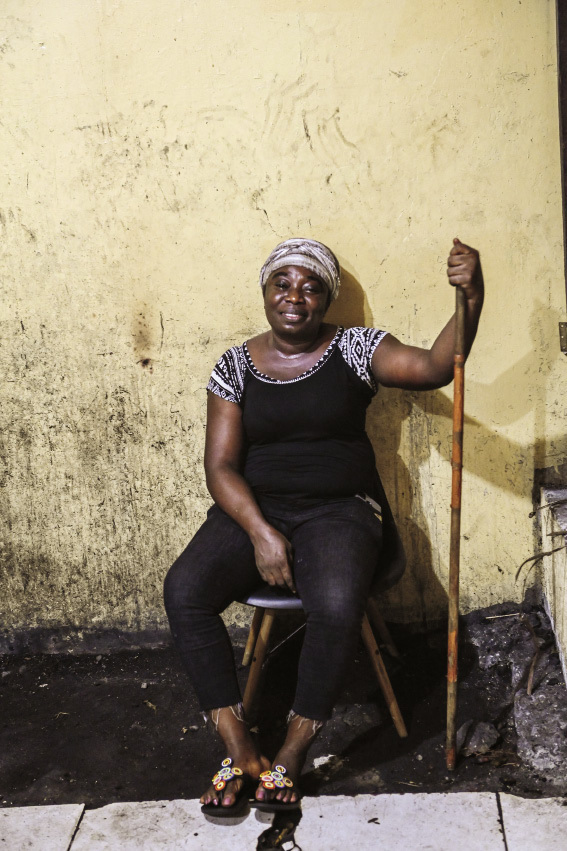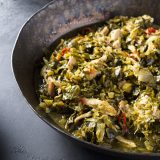Bronzed by smoke, the fish—all manner of shapes, but most no larger than my hand—glisten golden in the sun. They are arranged by the hundreds on mats woven from sticks, then stacked six or seven levels deep inside massive metal drums. Beneath, smoldering wood fires fill the air with a briny-savory richness that suffuses everything.
The scene repeats in one corrugated metal building after another, some with walls or ceilings open to the sky or ocean just a few meters away. It is Popo Beach, a warren-like fishing community in the New Kroo Town section of Monrovia, Liberia, a nation where smoked seafood is just one of several potent ingredients that season so much of the cooking.
Women work quickly, rotating the mats and flipping the fish to ensure even smoking, a process that lasts a day. Nearby, men in similar buildings, others in wooden dugout boats resting on the beach under a sun of bleaching intensity, weave filament-thin fishing nets with fingers impossibly nimble. Still others return from the ocean, dragging their boats along the sand.



I’d come to this West African nation of 5 million people—and its 350 miles of Atlantic coastline—to learn about its ties to the foods of the American South. But that came with another lesson—that in Liberia, seasoning is taken seriously.
There is, of course, the seafood, sold in iridescent heaps at every market. Crumbled into stews, it adds boldly rich, smoky flavor. There are chilies, red and green firebombs used in incendiary volumes. And there is bouillon, better known as Maggi, the brand common to central Africa, which is used in almost shocking amounts. Sometimes 10 or more cubes per dish.
Which is to say, Liberian cooking is anything but subtle. Which makes it a fascinating cuisine. So does its history.
Liberia was founded in the early 1800s as a misguided response to the growing number of freed Blacks in the U.S. and a desire to send them “home.” It didn’t go well. Few of the freed slaves had been taken from the land that would become Liberia, and their arrival prompted generations of often bloody conflict between the settlers and existing populations.
The former slaves brought with them many of the culinary traditions of the American South. That influence lingers today. Banana bread—also called rice bread—is a common treat, though the Liberian version uses ground rice, not wheat flour. And jollof rice, the spicy West African ancestor of jambalaya. Many of the dishes almost certainly had roots in Africa, the slaves introducing them to the South, then bringing Americanized versions back to Africa when Liberia was formed.
During more than a week of eating my way across Liberia—which often felt like a delicious exercise in eating across history—one dish I encountered repeatedly combined all of these factors—the history, the fiery chilies, the bouillon, often the smoked fish. Alternatively called “fried greens” and “potato greens,” it likely is both the ancestor and descendant of the South’s stewed collard greens.
In Liberia, seasoning is taken seriously. Smoked fish adds bold richness. Chilies are used in incendiary volumes. And of course there is bouillon, which is used in almost shocking amounts.
On my first night in Liberia, I eat at Fuzion, a cavernous restaurant in Monrovia, the country’s capital, with flickering lights, open walls and blissfully cold Club Beer. I eat my way through the menu, but am most impressed by the fried greens. Tender, yet hearty finely chopped greens. A savory broth. Tender chunks of chicken. Explosions of heat and spice. White rice sopping up the juices. Simple ingredients, yet so much going on.
To understand how it all comes together, we return another night. Actually, several nights. Because, as I might have mentioned, it’s hot in Liberia and the beers were cold. And the greens were good. On this particular night, head cook Fannie Pratt takes us first to the local market, a maze of stalls in what appears to be a former parking garage.
Dried fish stalls in one area. Bouillon and other prepared foods in another. Onions and chilies over here. Chicken and other meats over there. Seamstresses work at pedal-powered sewing machines on the stairwell landings. In short order, we’ve gathered the necessary chicken, bouillon cubes, onions, chilies and sweet potato greens—women slicing them hair thin without looking, clumping them in bunches in their hands, then shaving knives across the ends.
Back at the restaurant’s kitchen, where coal-fired cooking sends the temperature to near 120°F, Pratt makes quick work of preparing the fried greens. Lightly seasoned chicken is seared, then stewed along with copious greens, onions, chilies and bouillon. The result is so much more than its parts suggest. Rich, lively and at once fresh and substantial.
Packed with flavor. Packed with history. A meal both familiar and new.








